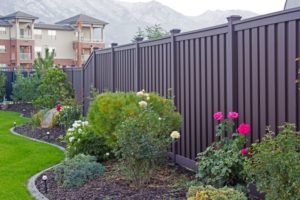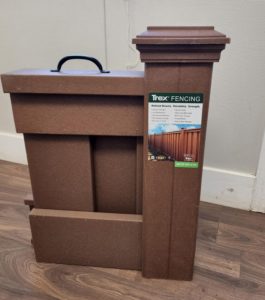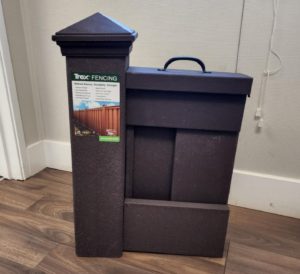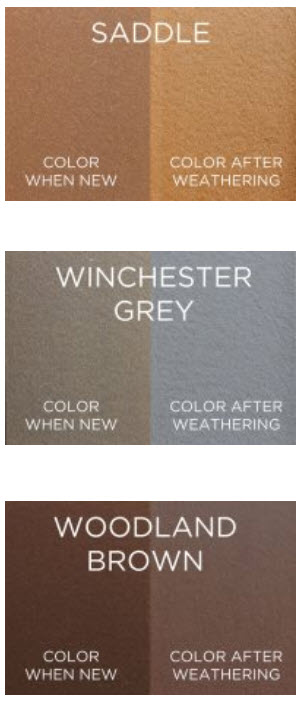More and more homeowners are choosing Trex fencing due to its low maintenance, long life, and durability. We’ve compiled the most frequently asked questions we receive about this unique building material, and some answers may surprise you—see fire mitigation question.
1. Is Trex fencing the same product as the Trex used for decking?
Yes. This is the same product, made by Trex with recycled content made up of reclaimed wood and plastic materials. Just like the decking, a Trex fence is more durable than cedar or vinyl fences and comes with a 25-year warranty from the manufacturer.
2. Are the posts that hold up the fence made of wood, or Trex material?
The fence posts on a Trex fence are also Trex compositive material; wood is not used. The posts are 5”x5”, nine feet long, and very sturdy.
3. Are the fence pickets the same as deck planks?
The pickets for Trex fences are designed specifically for fencing. They interlock like a curtain, with alternating pieces hooked together. This makes for an aesthetically pleasing fence, and also provides privacy as there are no gaps that can be seen through. Trex fences are known for their ‘framed picture’ look.

4. What’s the wind resistance of Trex fencing?
The interlocking-picket design of Trex fencing evenly distributes the stress from wind across the fence line, making each section incredibly strong. An eight-foot fence can withstand a sustained wind speed of 100mph, while a six-foot fence can stand up to 125mph. This is why many homeowners along the Colorado Front Range choose Trex for their fence, the winds coming off the foothills can be intense and many wood fences just can’t hold up in high winds.
5. Since Trex composite material is much heavier than wood, does it need more fence posts in the ground to hold it up?
It’s true that Trex is 50-70% heavier than comparable lumber. But more fence posts are not necessary. The heavier nature of Trex only adds to its strength and durability. With a six-foot fence we use a nine-foot post, and place about three feet of that post in the ground, making the entire fence very strong.
6. Is Trex a good option for fire mitigation around homes?
Trex fencing is a smart choice when considering fire mitigation around a house. This is an especially great option for fencing in an open area close to fields, open space, or the foothills. These areas are prone to high winds that can sweep fire quickly across the landscape. And if you have a wooden fence that starts out in an open area and runs right up to your house . . . the fire will quickly follow the fence line directly to your home. Fire districts are now recommending Trex fencing as a way to reduce fire risk around your home.
Related Blog Post: Using Trex Fencing as a Fire Mitigation Tool Around Your Home
7. What is Trex made of?
Trex composite fencing is made in the United States with 96% recycled content made up of reclaimed wood and plastic materials, making it environmentally friendly and low maintenance. The blend of wood and plastic in the material makes it a durable product not vulnerable to insect damage or tough weather conditions.
8. Are there different styles available?
There are different post cap styles that change the look of the fence depending on your preference. There are flat post caps, as well as a pyramid post cap option.


9. What colors are available for Trex fencing?

The material comes in three colors: Saddle (tan), Winchester Grey, and Woodland Brown (dark brown). It’s important for the homeowner to know that the material will initially fade. It weathers and fades to a lighter color after about a year. However, that’s the extent of the fading, it won’t continue to fade over time. But it’s good to know that if you are putting up a new Trex fence next to an old one, in the same color, you will see a difference for a while until the new one weathers.
10. Can it be painted or stained?
Yes, Trex fencing can be painted or stained. Since the initial color of the fence does fade, some homeowners prefer to paint or stain the fence to match their house, or a different color. However, much of the appeal of Trex material is that it doesn’t require painting, staining, or the maintenance that comes along with that, and many people desire to leave it as is.
Related read: Can You Paint or Stain a Trex Fence?
